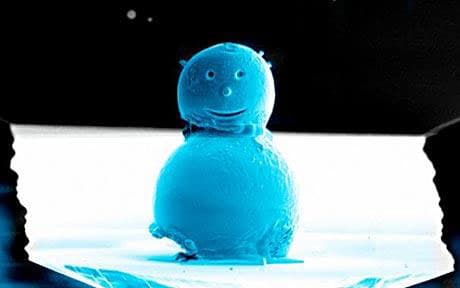The interactions of xenon atoms with a nanoelectromechanical system have now been measured to characterize the statistical noise caused by atomic fluctuations.
The interactions of xenon atoms with a nanoelectromechanical system have now been measured to characterize the statistical noise caused by atomic fluctuations.
Nanofabrication methods were used to observe a rare state of matter known as a ‘half-quantum vortex’, which may bring a solution to the decoherence hurdle to quantum computing.
An energy cell containing a lead zirconate titanate cantilever coated with a carbon nanotube film uses nanotechnology to produce electricity from scavenged light and thermal energy.

The worlds smallest snowman. from nanowerk The snowman is 10 µm across, 1/5th the width of a human hair. The snowman was made from two tin beads used to calibrate electron microscope astigmatism. The eyes and smile were milled using a focused ion beam, and the nose, which is under 1 µm wide,… Continue reading The worlds smallest snowman
IEEE Spectrum: Radios With Micromachined Resonators. It’s likely that better mechanical components, and the cognitive-radio techniques they enable, will usher in the next wave of mobile telephony by giving our cellphones access to much more spectrum. These phones will operate in multiple bands, provide greater data throughput, and minimize if not eliminate the need for… Continue reading IEEE Spectrum: Radios With Micromachined Resonators
Koreans Show Feasibility of Room Temperature Version of IBM Millipede Super High Density Memory.
One of the major problems for micromachines, much less nanomachines, is wear. The phenomenon of stiction combines the two worst aspects of surface-to-surface interaction — a high coefficient of friction and a locally-generated high applied force — to cause enormous problems. At the very smallest scale, once we gain complete control over atomic configuration, superlubricity… Continue reading Nanoscale Wear
A newly discovered repulsive quantum mechanical force could be useful for nanotech applications by enabling a type of quantum levitation.
Arrays of atomic force probe tips are promising nanotech approaches to denser, faster, cheaper memories.
Swedish scientists have developed a computer program to calculate Casimir forces between various types of nanostructured materials, which may help to determine whether significant friction problems exist in specific designs.